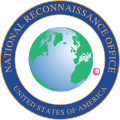Identification

The nature of STS-38's payload was classified, but observers attempted to identify it. Since Prowler is by nature stealthy, USA-67 was initially believed to be the only satellite deployed. Thus, because of the single payload and two upper stages, USA-67 was believed to be a Magnum satellite, deployed via a two-stage Inertial Upper Stage (IUS). Photographs released from later in the STS-38 mission have shown that Atlantis was not carrying the adaptor necessary to deploy an IUS during STS-38. [1]
In July 1998, amateur observers in Texas observed an unidentified object flashing in geosynchronous orbit. [8] The object was subsequently lost, then was rediscovered in June 2000 when its flashes became brighter, [9] [10] some even visible with the naked eye. Following the 2000 observations amateur observers were still unable to identify the satellite, so began referring to it by the pseudo International Designator 2000-653A and pseudo Satellite Catalog Number 90007. [11]
In 2004 NBC published an article containing details about Prowler and its mission. [1] [4]
In January 2010, amateur observer Ted Molczan cross-referenced data from the European Space Agency's Classification of Geosynchronous Objects survey with amateur observations of classified spacecraft, noting that an unidentified object designated UI.139 by the survey corresponded with observations of 2000-653A, and that its orbit was close to that of USA-67 - speculating that they may have been from the same launch. [12] Based on this, Molczan conducted a more detailed investigation, and in 2011 published a paper identifying 2000-653A as Prowler. [1]
